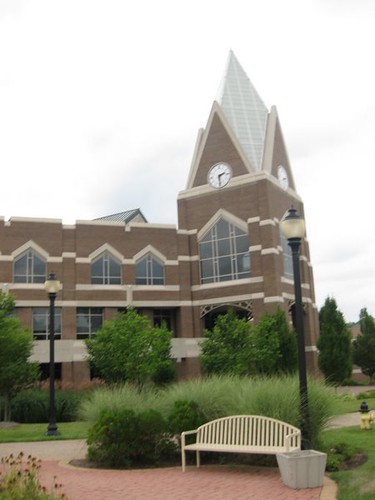
University of Cincinnati
Background Information: Since its founding in 1819, the University of Cincinnati “has been the source of many discoveries creating positive change for society, including the oral polio vaccine,” among others. A public research university, located in the large and urban city of Cincinnati, Ohio, UC emphasizes the connection between a world-class education and real-world experience, as evidenced by its co-op program, ranked in the nation’s top five. UC serves a student population of over 37,000 students, making it one of the largest public universities in the state. “Through scholarship, service, partnerships, and leadership, (the University of Cincinnati) creates opportunity, develops educated and engaged citizens, enhances the economy and enriches the University, city, state and global community. (UC website)
Initial Thoughts: Not too much to say in this area. I didn't look into UC during my own college search, and the only thing I knew about it was the fact that it used to be (still is?) a big basketball school -- Bob Huggins, anyone? Of course, my impressions are extremely outdated ... To be honest, I don't know much about UC. It's on my to-visit list because a lot of people who might be reading this will be considering it as an option. Anyway, I don't have anything else to say about my "initial thoughts" of UC ... so let's begin with the tour ...
The Campus
- Layout: UC is not divided into quads/greens/anything of that nature. I asked a current UC student (and also tour guide) and he told me that UC is more or less divided into the typical themes that one might associate with a university. There is the "academic area," consisting of academic departments, administrative offices, and also on-campus library; a "residential area" where students to live on campus can mingle with one another in order to form lasting friendships; and lastly, the "fun area," consisting of Main Street, Sigma Sigma Commons, the Rec Center, and also the stadium. These are not isolated areas, but the surrounding buildings within a given area more or less follow a common theme.
- Architecture: UC’s campus is a mixture of the old and new. It’s hard to pinpoint the architectural style of the entire campus because there is such a vast array. There is, as I have grown to expect, the old red bricked academic buildings floating around, but there are also very modern looking buildings and many unique sculptures. I don’t know if you can really say that there is a singular theme that unites the entire campus.
With that being said, do not misunderstand and believe that UC looks disjointed. On the contrary, everything seems to flow together to make one very interesting and lovely campus. Check out the photos below to see what I mean!
- Scale: UC is definitely a pedestrian campus, and it is possible to cross from one end of the campus to the other end in about 10-15 minutes.
- The Student Center: UC's Steger Student Life Center is home to the following resources -- offices of student services (student government, student activities), a computer lab, an in-house Starbucks, the Philip M. Meyers Jr. Memorial Gallery, a computer store, and a Subway sandwich shop.
- Student Living: As far as residential living goes, all of the residence halls on campus are co-ed and also substance free. All of the rooms (whether it is community-styled or suite-styled) come equipped with Cable-TV, Internet, a microfridge (microwave and refrigerator), and completely air-conditioned. There are about 8 halls on campus at UC, and all freshmen are required to live in these halls during their freshmen year. One of the best things about UC’s residence halls is the fact that they never fully close --- yes, even during winter breaks!
- Notable Attractions: I really liked Sigma Sigma Commons, a large greenspace located near the Rec Center and Business Department Building. Sigma Sigma Commons was built by UC in response to its students' desire for more green space on campus (Trust me, green space is important! The "green space" of a university is home to the stereotypical college activities one sees reenacted in way too many college-related movies; ex: hacky sack, frisbee, catching some rays on a sunny day...). Sigma Sigma Commons is home to the on-campus concert thrown every year, as well as UC's annual student carnival.
Final Conclusions: All in all, I think that UC is a good option for those who want to go to a big and public university without feeling too engulfed by the size. With its many resources, UC has a lot to offer its students, and I hope you will consider it as a possible option in your college list.





